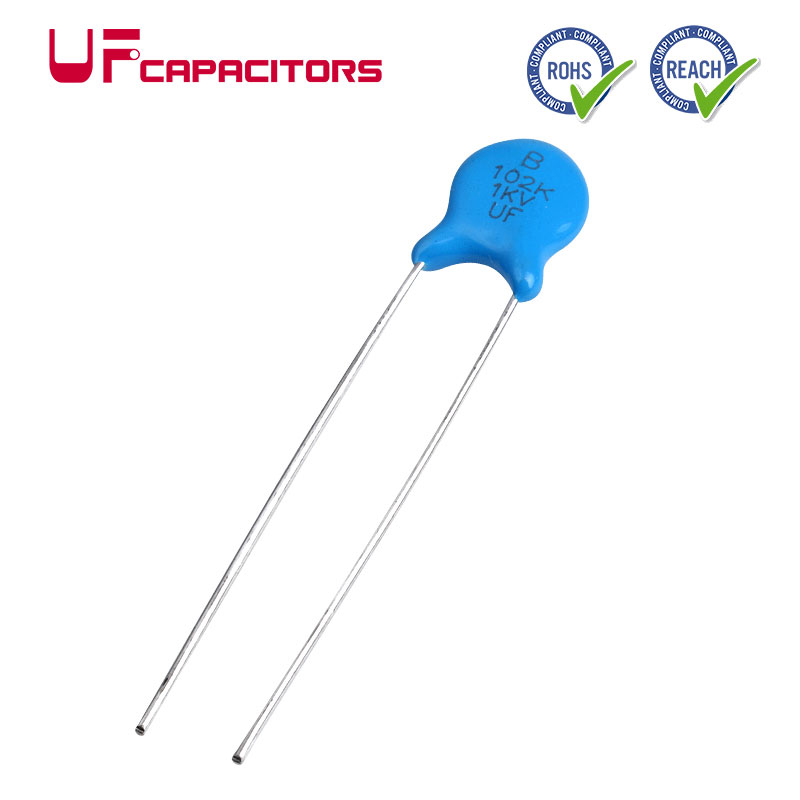- Español
- Português
- русский
- Français
- 日本語
- Deutsch
- tiếng Việt
- Italiano
- Nederlands
- ภาษาไทย
- Polski
- 한국어
- Svenska
- magyar
- Malay
- বাংলা ভাষার
- Dansk
- Suomi
- हिन्दी
- Pilipino
- Türkçe
- Gaeilge
- العربية
- Indonesia
- Norsk
- تمل
- český
- ελληνικά
- український
- Javanese
- فارسی
- தமிழ்
- తెలుగు
- नेपाली
- Burmese
- български
- ລາວ
- Latine
- Қазақша
- Euskal
- Azərbaycan
- Slovenský jazyk
- Македонски
- Lietuvos
- Eesti Keel
- Română
- Slovenski
- मराठी
- Srpski језик
Selection of Capacitors (2)
2022-04-06
Selection of capacitors (2)
Insulation resistance: Since the medium between the two magnets of the capacitor is not a complete insulator, its resistance is not infinite, but finite. Generally speaking, the resistance between the two magnets of a capacitor is called insulation resistance or leakage resistance. The smaller the leakage resistance, the more serious the leakage. This loss does not only affect capacitors. Leakage will cause energy loss, capacitor life, and will affect the operation of the circuit. Therefore, the larger the leakage resistance, the better.
Material loss: The energy consumed by the capacitor under the action of the electric field, usually expressed as the ratio of the power loss to the reactive power of the capacitor, that is, the tangent of the loss angle. The larger the loss angle, the larger the loss and loss angle of the capacitor, and the capacitor is not suitable for high frequency operation.
3. Fixed capacitor detection
A is used to detect small capacitances below 15pF. Since the capacity of the fixed capacitor below 15PF is too small, when measuring with a multimeter, it can only be qualitatively checked for leakage, internal short circuit or breakage. The multimeter R×10k can be used for measurement. The two pins of the capacitor are arbitrarily connected with two pens, and the resistance value should be infinite. If the measured resistance is zero, the capacitor is damaged due to leakage or internal breakdown.
The charging phenomenon of the 10 PF~0≤01μF fixed capacitor was detected, and the quality of the capacitor was judged. The multimeter should be R×1K. The β value of the two transistors is greater than 100, and the penetration current is small. Due to the amplification effect of the composite tri-tube, the charging and discharging process of the measured capacitor is amplified, and the swing range of the multimeter pointer is increased, which is convenient for observation.

Insulation resistance: Since the medium between the two magnets of the capacitor is not a complete insulator, its resistance is not infinite, but finite. Generally speaking, the resistance between the two magnets of a capacitor is called insulation resistance or leakage resistance. The smaller the leakage resistance, the more serious the leakage. This loss does not only affect capacitors. Leakage will cause energy loss, capacitor life, and will affect the operation of the circuit. Therefore, the larger the leakage resistance, the better.
Material loss: The energy consumed by the capacitor under the action of the electric field, usually expressed as the ratio of the power loss to the reactive power of the capacitor, that is, the tangent of the loss angle. The larger the loss angle, the larger the loss and loss angle of the capacitor, and the capacitor is not suitable for high frequency operation.
3. Fixed capacitor detection
A is used to detect small capacitances below 15pF. Since the capacity of the fixed capacitor below 15PF is too small, when measuring with a multimeter, it can only be qualitatively checked for leakage, internal short circuit or breakage. The multimeter R×10k can be used for measurement. The two pins of the capacitor are arbitrarily connected with two pens, and the resistance value should be infinite. If the measured resistance is zero, the capacitor is damaged due to leakage or internal breakdown.
The charging phenomenon of the 10 PF~0≤01μF fixed capacitor was detected, and the quality of the capacitor was judged. The multimeter should be R×1K. The β value of the two transistors is greater than 100, and the penetration current is small. Due to the amplification effect of the composite tri-tube, the charging and discharging process of the measured capacitor is amplified, and the swing range of the multimeter pointer is increased, which is convenient for observation.

Previous:Selection of Capacitors (1)


